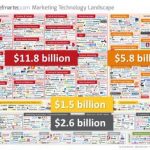EyeGate CEO: Valeant Deal Helps firm keep away from errors of prior

For EyeGate prescription drugs, the licensing deal it signed final week with Valeant pharmaceuticals world provides the important cash to push forward a uveitis drug that has been in limbo on account that EyeGate raised not up to expected in its initial public providing.
EyeGate CEO Stephen From argues that it’s not near to the cash. It’s about the validation that a reputation like Valeant provides a small company. It’s additionally about proving that the corporate received’t extend beyond its own capabilities—and it gained’t make the identical mistakes twice, he says.
the money does subject. Waltham, MA-primarily based EyeGate is receiving an undisclosed upfront cost, milestones, and royalties by using licensing to Valeant the international rights to its drug. The therapy is a corticosteroid compound concentrated on uveitis, an inflammatory condition that can result in lost vision or permanent blindness.
That’ll lend a hand the corporate pay for a second phase 3 learn about in uveitis so it might probably are searching for regulatory approval. In turn, that implies EyeGate has to share the benefits of the drug—which treats the tissue in the entrance of the attention—if it’s licensed. Valeant additionally received the identical rights to the corporate’s device for delivering every of its medicine into the eye, referred to as EyeGate II.
That’s worth it, From says, because EyeGate additionally positive factors get right of entry to to the promoting and commercialization groups at Valeant, which is based in Montreal with U.S. headquarters in New Jersey.
“are you aware how various disciplines are actually excited about advertising, commercializing, and distributing a drug?” From mentioned in a telephone interview. “I didn’t want to must struggle with that.”
EyeGate needed a companion so as to move forward with the trial for the drug, EPG-437, because it had much less cash on the books than From had hoped. the corporate raised $ four million in a February IPO that introduced EyeGate to the over-the-counter market. It was once significantly lower than the $ 25 million Eyegate had hoped to wring from an providing on the Nasdaq in 2014, which was once canceled.
that cash pressure stems partly from two problems the company faced because it grew, From says. within the early days after EyeGate was founded, it was once looking for a treatment for uveitis, he says. around 2008, it began focusing on the usage of a formulation of the corticosteroid to unravel issues with dry eye.
Dry eye has a a long way higher patient population than uveitis, From says. then again, it has been troublesome to create an effective treatment, because dry eye is a syndrome and ends up in clinical trials differ depending on the trial and who’s in it, From says. these kinds of difficulties imply it’s costly.
“Dry eye can simply suck you dry very quickly,” From says. “Our biggest mistake as a really small firm was going out to dry eye.”
via 2014, EyeGate had raised about $ 54.1 million in equity and debt, in step with its regulatory filings. meanwhile, it has accumulated a deficit of about $ 56 million.
That’s what made the decision to come its focal point to uveitis important, From says, and it’s why he says traders can trust his decision-making one day. in addition to the care for Valeant, EyeGate filed paperwork in June indicating its hope to boost as a lot as $ 15 million in a secondary offering.
“I did the fitting factor. I will have performed some other phase 3 and thrown the dice and hoped,” From says relating to dry eye. “the corporate would not have survived every other failure. We retrenched, fought it via, and we’ve gotten the place we’re.”
Dry eye wasn’t the corporate’s most effective mistake, From says. EyeGate used to be based based totally on technology from the college of Miami, and first emerged as an organization in 2000 in France. It incorporated within the U.S. in 2004, and soon after From invested in a moist lab as a result of he wished the business so as to boost its own drug formulations and not be dependent on contract analysis.
When the dry eye construction failed, From says he had no choice but to promote the wet lab. “after I take a look at the place we’re these days, we could have been a lot further ahead, however I don’t apologize for that,” he says.
Now, with 4 full-time employees, From is once more hopeful that growth is beforehand. His group has a method of a corticosteroid that it’s trying out in a section 2 trial to treat macular edema in the back of the eye, a harder space to tackle.
in the meantime, the company’s instrument, EyeGate II, is key to treating the again-of-the-eye indication for macular edema, a condition that swells a neighborhood of the retina after fluid and protein deposits gather. The device makes direct contact with a patient’s eye and sends the drug thru it using completely different amperage, with extra electrical present sending it further, From says.
The market appeared to respond to the news of Valeant and the macular edema take a look at. EyeGate’s inventory, which is traded on the OTCQB mission market, rose $ eight.30 to $ 15 per share on July 14. The inventory had traded right down to $ thirteen.50 as of 10:16 a.m. in big apple on July 15.
If the company is a hit in its try and acquire approval of its uveitis drug, it will look into other signs it might probably deal with with the corticosteroid, From says. it will also believe the use of different methods of handing over medicine, akin to proteins, he says.
“that you can expectantly research from what you’ve performed prior to now and with a bit of luck construct on it,” he says. “I don’t want to make the identical mistakes I did up to now.”
And if the company finds different signals or molecules that can ship its medicine, it’s going to have choices. Its care for Valeant—an organization that is such an lively deal-maker, it has an acquisitions FAQ web page—is just for uveitis.
“The phrases replicate the uveitis market. They’re the appropriate phrases for what they obtained,” From says. “If we do lengthen the label, they’ve to purchase into that.”
(80)













